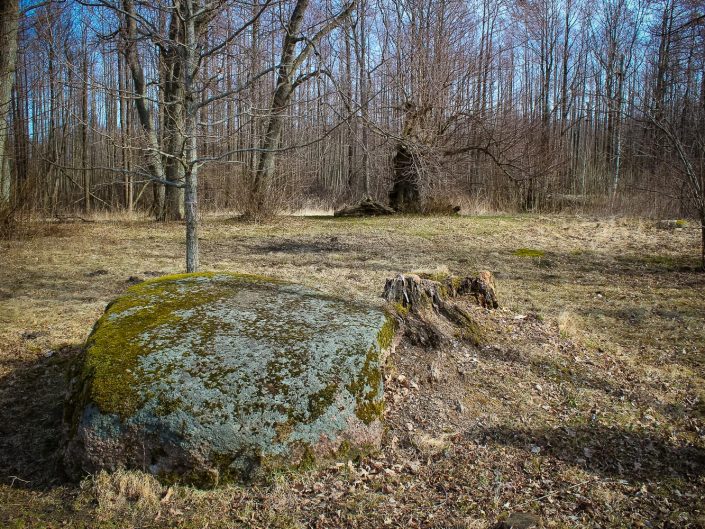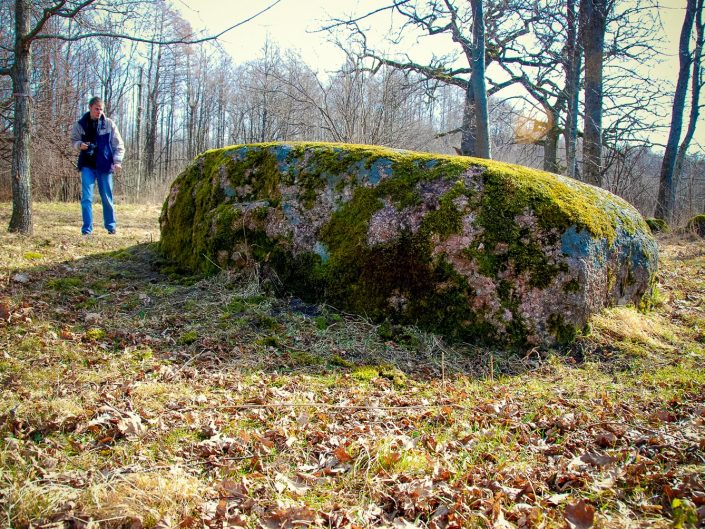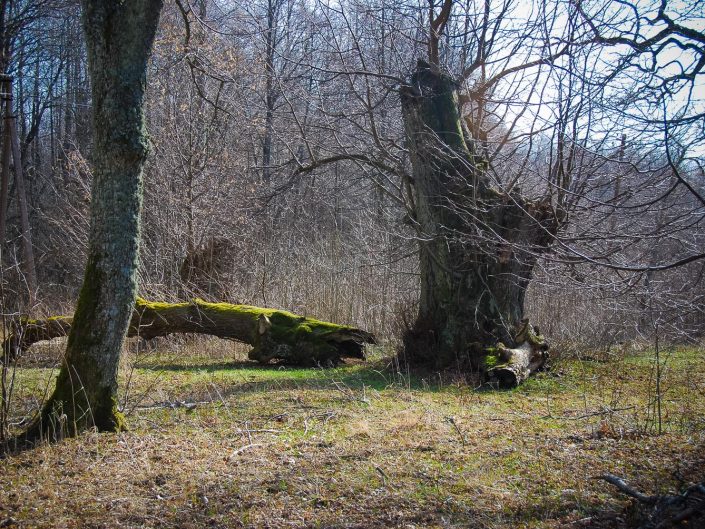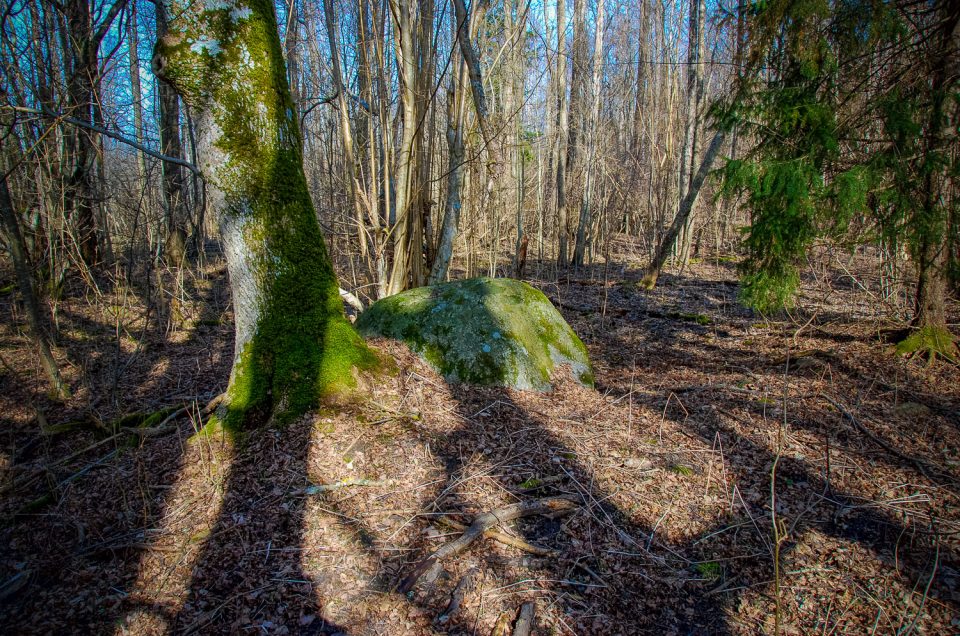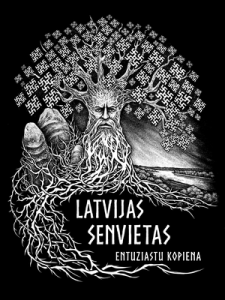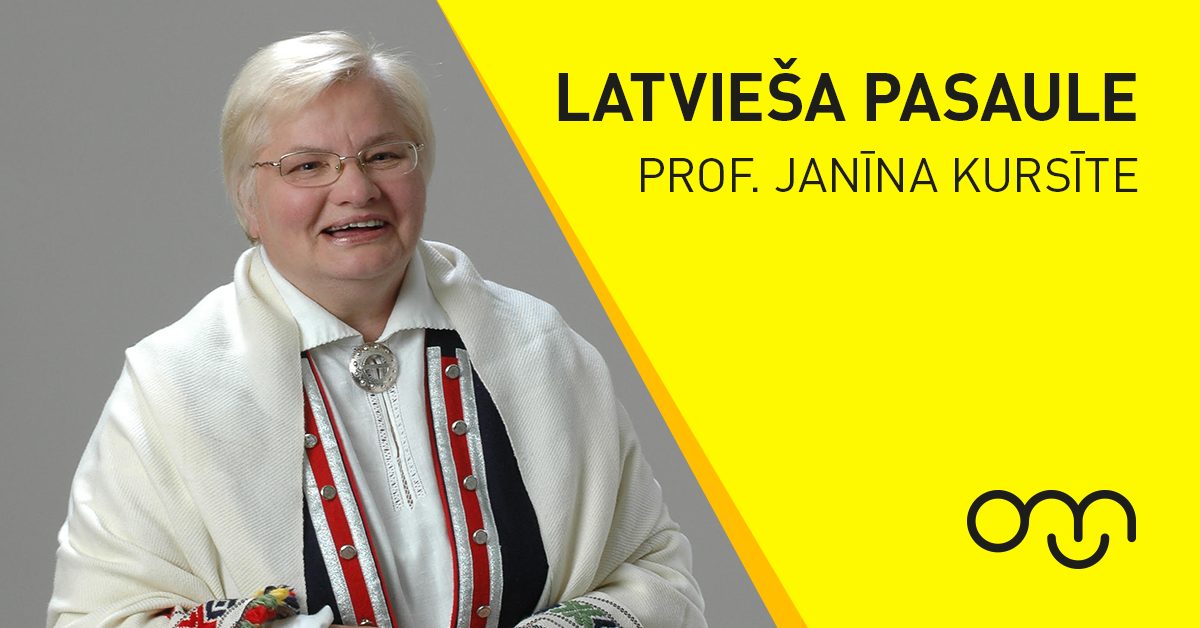A heritage stone. Possibly, a mythological stone. A modern cult site. Dimensions: length of 3.0 m, widthof 2.4 m, height of 0.9 m, circumference of 8.6 m, volumeof 3 m3. Rapakivi granite — orange-brown. The stone surface is considerably eroded, there are some small cracks. The stone seems to be lying in its original place. On the NW side of the stone 0.4 m from the ground there is a natural step which is up to 50 cm long and 12–13 cm wide. The first data about the Ezerskola Sacrificial Stone were provided by I. Loze in 1976.
The stone is protected by the state as an archeological monument, however, clear data on its cultural and historic significance are missing. In reality it is visible that nowadays people often sacrifice money on the stone. For example, on 14 August, 2004 it was observed that people had thrown together money on the stone (Lithuanian cents, Latvian santims and even a 50 santim coin). The stone has a rather flat table-like surface, however, there are no cavities or any carvings. Some data suggest that at the stone there used to be a sacred furrow, however, the fact has no archeological evidence. 20 m NE from the stone there is a secular linden (with the circumference of 5.15 m) which is sometimes called the Sacrificial Linden.
Close to Ezerskola there is another significant stone, which by its dimensions is a secular stone of local significance: its length is 4.3 m, width of 2.8 m, height of 1.1 m, circumference of 12.2 m, volume of 4–5 m3. It has no heritage value.
